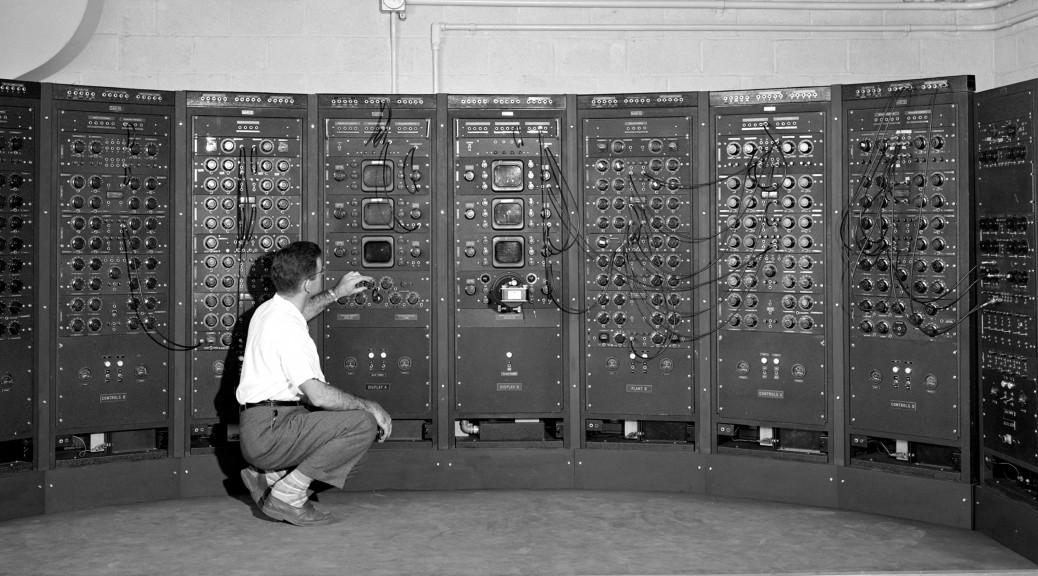Schedule
Section 1 Section 2
Ceruzzi – Intro and Chapter 1 10/7 10/6
“Txtual Condition” from CTM 10/7 10/6
Prezi Tutorial 10/7 10/8
Ceruzzi Chapter 2 10/7 10/10
“From A to Screen” from CTM 10/7 10/10
Readings
Computing: A Concise History
Paul Ceruzzi
Introduction and Chapter 1
Preview
In A Concise History, Ceruzzi tracks the rise of computing, as a concept, process, and system of artifacts, from its pre-20th century roots up to the development of social media sites such as Facebook and Twitter. He begins by positing four main threads as running throughout the history of computer technology: the digital paradigm, convergence, solid state electronics. and human-machine interface. He then goes on to base his history around these 4 concepts.
Ceruzzi uses chapter 1 to trace the early technologies and concepts of the 17th through early 20th centuries that shaped the surge of technological innovation that took place during World War 2. These early developments in means of control, storage, calculation, electronic circuitry, and communication have converged to make possible our modern understanding of computing.
Discussion Questions
1) Describe each of the major threads that Ceruzzi describes as running through the history of computing.
2) Do you agree with Ceruzzi’s suggestion that Moore’s law is an example of technological determinism?
3) What 3 significant functions of computing does Ceruzzi mention?
4) In what ways were the computing and communication devices of the 1930’s out of balance?
5) What 5 combined attributes make up a modern computer?
“The .txtual Condition”
Matthew Kirschenbaum
Chapter 3 from Comparative Textual Media
Preview
Last week we visited the Electronic Literature Lab and talked about the importance of being able to access digital documents through the systems on which they were originally created. Kirschenbaum continues this conversation by exploring what it means to archive digital works. He looks at questions surrounding retrieval (how do you collect an author’s works when they are spread across forums, emails, chats, and databases?) preservation, and materiality (what is the nature of an archive when it is not being accessed?)
Discussion Questions
1) How does the digital age complicate the notion of a primary record?
2) Why is the idea of archiving something digitally an “ambiguous proposition?
3) In what sense can the word “archive” only be used as a verb when referring to digital texts?
4) Why is the idea of materiality important to the discussion around digital archives?
5) What do you think does Kirschenbaum mean when he writes, “We can never access the same digital file twice”?
6) Give an example of “the ongoing oscillation between obsolescence and novelty”
